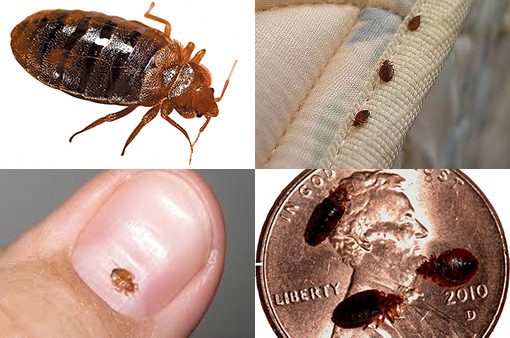Top A1 Bed Bug Treatment in Houston - Quick and Affordable
Wiki Article
Recognizing the Lifecycle of Pests for Targeted Control Strategies
Understanding the lifecycle of insects is a fundamental aspect of effective pest management methods. With a deeper understanding of how parasites grow and progress, tailored control strategies can be designed to address specific factors in their lifecycle, ultimately leading to even more effective pest monitoring end results.Relevance of Recognizing Bug Lifecycle
Comprehending the lifecycle of insects is essential for developing effective and targeted control strategies in insect management. By understanding the various phases a bug experiences from egg to grownup, bug control professionals can recognize weak spots in the lifecycle where treatment can be most effective. For instance, knowing when larvae are most energetic can help determine the optimal timing for applying larvicides. Additionally, comprehending the life expectancy of a bug species can help in anticipating population growth patterns and potential invasion dangers.In addition, identifying the details environmental problems required for each phase of the parasite's lifecycle can assist choices on environment adjustment or exclusion techniques to reduce and interrupt the lifecycle bug populations. This expertise makes it possible for pest monitoring experts to execute proactive measures as opposed to counting exclusively on reactive treatments, leading to even more lasting and long-lasting insect control services. Ultimately, a detailed understanding of parasite lifecycles encourages parasite control practitioners to tailor their methods properly, optimizing and decreasing ecological effects control end results.
Key Stages in Pest Growth
To properly carry out targeted control techniques in pest monitoring, a vital element depends on thoroughly identifying and recognizing the essential phases in insect growth. Insect growth normally contains numerous crucial phases that are critical for their lifecycle and administration. The initial stage is the egg stage, where pests lay eggs that later on hatch out into larvae. Larvae after that progress right into pupae, a phase where they go through transformation prior to emerging as grown-up bugs. Understanding these stages is vital as it aids in identifying vulnerable points in the lifecycle where control procedures can be most reliable.

Vulnerabilities in Bug Lifecycle
Throughout the different stages of a parasite's lifecycle, distinctive vulnerabilities emerge that can be tactically targeted for effective control steps. One important vulnerability lies in the egg stage, where pests are often extra at risk to specific pesticides or organic control representatives because of their soft outer shell, making them less complicated targets for intervention. In addition, the larval or nymph phase presents susceptabilities as bugs undergo quick development and advancement, requiring high power intake that can be made use of by disrupting their food resources or introducing growth preventions. Pupal phases, characterized by immobility and improvement, offer a home window for targeted control through physical obstacles or specific therapies that prevent successful emergence. Adult parasites, while a lot more durable due to their reproductive ability, can still be prone throughout breeding or egg-laying activities, which can you can try here be disrupted via scent catches or sterilization techniques. Recognizing these vulnerabilities in the parasite lifecycle is necessary for developing reliable and exact control methods that effectively take care of insect populations while reducing ecological impact.Applying Targeted Control Measures

Applying targeted control procedures usually involves a multi-faceted strategy. This may consist of habitat modification to make the setting less hospitable to parasites, such as eliminating standing water for insect control or sealing entry factors for rats. Additionally, organic control techniques can be utilized, where all-natural killers or pathogens are introduced to maintain insect populations in check.
Integrated Pest Administration (IPM) approaches that integrate numerous control steps in a worked with and lasting manner are frequently the most efficient in attaining lasting parasite management objectives. By executing targeted control procedures based on a detailed understanding of pest lifecycles, pest populations can be efficiently controlled while lessening dangers to human wellness and the setting.
Enhanced Insect Administration Practices

Furthermore, the consolidation of biological control agents, such as all-natural killers or pathogens of parasites, can aid minimize reliance on chemical pesticides and promote a much more balanced community. Applying physical obstacles and traps can likewise become part of improved pest management techniques, providing safe and targeted options for insect control. Additionally, using scents and various other semiochemicals can interfere with pest mating patterns and communication, causing lowered pest populations gradually.
Verdict
In verdict, understanding the lifecycle of insects is critical for effective pest administration methods. By recognizing vital phases in pest growth and susceptabilities in their lifecycle, targeted control steps can be executed to minimize parasite populations. Enhanced pest monitoring view it now techniques can aid minimize the dependence on broad-spectrum chemicals and advertise more lasting and eco-friendly parasite control approaches. This understanding plays a crucial function in preserving healthy and balanced environments and farming performance.Comprehending the lifecycle of insects is vital for developing reliable and targeted control methods in bug management. By comprehending the numerous stages a pest goes via from egg to grownup, bug control experts can determine vulnerable points in the lifecycle where intervention can be most successful. Inevitably, a comprehensive understanding of pest lifecycles empowers parasite control professionals to tailor their methods efficiently, reducing environmental influences and taking full advantage of control end results.
By executing targeted control actions based on a detailed understanding of parasite lifecycles, insect populations can be efficiently regulated while lessening risks to human wellness and the atmosphere.
By determining vital stages in insect advancement and susceptabilities in their lifecycle, targeted control procedures can be implemented to reduce bug populations.
Report this wiki page